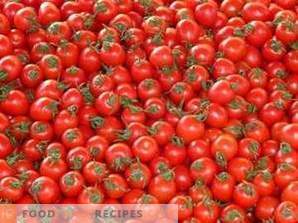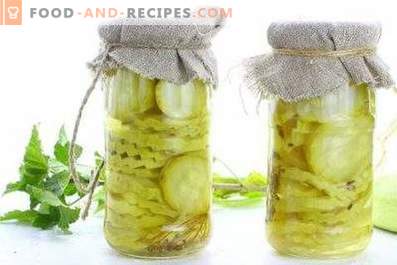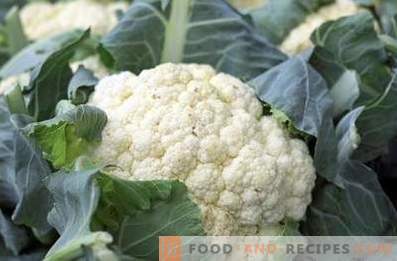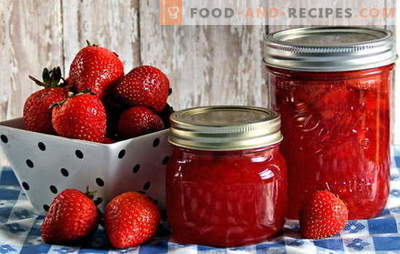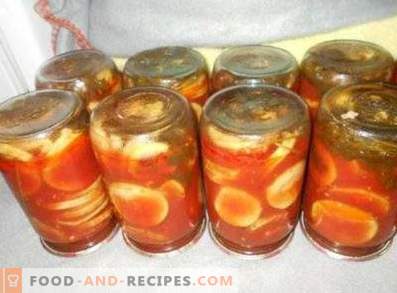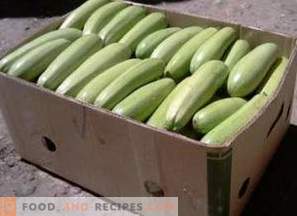
Squashes and pumpkins are botanically very close. In fact, zucchini is a kind of a hard pumpkin, different from it in shape, color of pulp and skin.
There are many varieties of zucchini, some of which are early ripening, summer, and others - late-ripening - are grown for eating in winter. Therefore, the shelf life of different varieties of zucchini differ from each other.
Useful properties of zucchini
- In any kind of zucchini there is not too much fiber, therefore they are well absorbed by the body.
- They are rich in potassium, and this trace element in them more than sodium, seven times.
- Also in courgettes there is iron and phosphorus, pantothenic and folic acid, vitamins B1, B2, PP, C, carotene, sugars, proteins, starch and pectins.
How to store zucchini
Zucchini belongs to the early ripe zucchini.
In the near future, for consumption, zucchini is torn off from the lashes very small, when their length reaches 15 cm. They have thin skin, tender pulp and are distinguished by the lack of seeds, since they have not yet matured by this time.
Zucchini is used in various vegetable dishes, added to meat. They make fritters of them, casseroles, even make jam. These early zucchini are good for diet and baby food.
But zucchini practically can not be stored due to the delicate and thin peel.
After harvesting or buying in the market, this early ripe zucchini can be stored for no more than a week, and in the fridge - in the vegetable compartment. But if the peel of a zucchini is intact, then putting the fruit in a paper bag, in which there are several holes for ventilation, the shelf life can be extended for another 1-2 weeks. It all depends on the sort of zucchini. Among the varieties of zucchini, there are those that in favorable conditions can be stored for relatively long. These are Zebra, Tsukesh, Genovese, Bumblebee. If you hold them on the bed longer, then the skin will become denser. So, they can also be sent to the vegetable store. Although they will not be stored as long as ordinary zucchini. The main thing is that they do not overslept. After all, any over-ripe vegetable during storage will begin to deteriorate from the inside.
In order not to worry about the safety of zucchini in winter, you can freeze them. Moreover, they tolerate freezing well.
To do this, zucchini washed, removed the stem, dried from moisture. Then they are cut into convenient for further use pieces, put in a plastic bag, well tied and put into the freezer.
How to prepare zucchini for storage
Such varieties of zucchini as Greek 110, Kuldzhinsky, Gribovsky 37, Odessa 52, Hybrid Nemchinovsky, Beloplodny are most often grown.
Harvesting is carried out in the middle or end of September.
For winter storage zucchini give fully mature. After all, the thicker and stronger their skin will be, the better they will be stored.
To prevent squash from contact with the ground from damaging the rot or not to eat the slugs, under them enclose any insulating material: mulch, plywood, thin boards, even glass.
Zucchini is harvested before the onset of frost, since even slightly frozen fruit cannot be stored.
They are cut from the lash with a knife, leaving the stem of at least five centimeters.
Zucchini with thick skin suitable for storage, on which there is no damage even in the form of a small scratch. The cut fruits are left in the sun for one day so that their skin and tails will dry. After all, the cut is the most vulnerable place from where the fruit can begin to deteriorate.
Then squash again inspect, wipe with a dry soft cloth and sent to storage.
How to store zucchini
Before putting zucchini in storage, the room needs to be ventilated, garbage should be removed, and shelves should be prepared.
The temperature in the storage should be within 5-10 ° of heat.
Humidity, favorably affecting the safety of zucchini, should be about 70%.
Method 1
Squashes are placed on shelves that are covered with straw, sacks, and burlap.
They are placed in one row of the stalks out to notice in time if the squash starts to deteriorate.
Fruits should not be in contact with each other. For this, it is recommended to lay sheets of cardboard between them.
Method 2
Squashes can be stored in a suspended state by placing each fruit in a net. Thus it is possible to exclude the occurrence of pressure sores and dents on them.
How to store zucchini in the apartment
Squashes stored in a dark place in the coolest room. This may be a closet or pantry.
If the balcony is glazed and the temperature on it does not fall below zero, then you can store zucchini there.
They are placed on shelves or placed in boxes laid with straw or sacking (can be covered with newspapers).
So that sunlight does not fall on the fruits, they are covered with something on top of them. But you need to ensure that the greenhouse effect does not form inside, and there is also enough fresh air. Some housewives store zucchini in cabinets. But this is not the best option. Because in the upper layers of air, the temperature is always several degrees higher than near the floor. Therefore, if there is no pantry, the squash is placed at least under the bed or closer to the balcony door, but not near the heating devices.
Zucchini can and freeze. To do this, it is washed, cleaned of thick rind, cut in half and remove the seeds with the part of the pulp that surrounds them. Then the zucchini is cut into cubes or slices, placed in a plastic bag and sent to the freezer for storage.
Council hostess
During the storage of zucchini it is necessary to check their quality. If a fruit is in doubt, it must be isolated from others.
If the hostess does not plan to prepare a dish from this vegetable in the near future, she can peel it off, carefully cut out suspicious places, remove seeds, cut the pulp, put it in a plastic bag and put it in the freezer. But this zucchini should be used in food in the first place.


